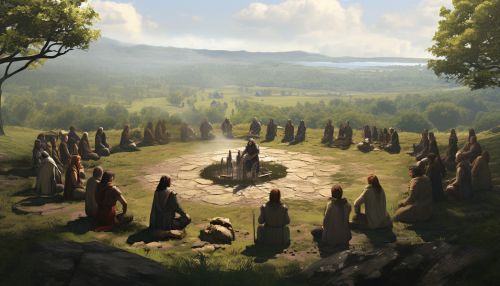Communal land
Overview
Communal land is a term that refers to land that is not owned by an individual or a company, but by a community. The concept of communal land is deeply rooted in many cultures and societies around the world, and it plays a critical role in the livelihoods of millions of people, particularly in rural areas. Communal land can include forests, pastures, and other natural resources, which are managed and used collectively by a community. The management and use of communal land are often governed by customary laws and practices, which can vary widely from one community to another Communal Land Management.


Historical Context
The concept of communal land has a long history, dating back to prehistoric times. In many traditional societies, land was not seen as a commodity that could be bought and sold, but as a shared resource that belonged to the entire community. This view of land was often tied to spiritual or religious beliefs, with land seen as a sacred gift from the gods or ancestors. In many indigenous cultures, for example, land is seen as a living entity, with its own spirit and consciousness Indigenous Land Beliefs.
Types of Communal Land
There are several types of communal land, each with its own unique characteristics and management practices. These include:
- Commons: These are lands that are owned and managed collectively by a community. The use of the commons is often regulated by customary laws, which dictate who can use the land and for what purpose Commons.
- Indigenous lands: These are lands that are traditionally owned and used by indigenous peoples. Indigenous lands are often governed by customary laws and practices, which can include complex systems of land tenure and resource management Indigenous Land Rights.
- Pastoral lands: These are lands that are used for grazing livestock. Pastoral lands are often managed collectively by a community, with rules and regulations governing the movement and grazing of livestock Pastoralism.
Communal Land Management
The management of communal land is a complex process that involves balancing the needs and interests of the community with the need to conserve and sustainably use natural resources. This often involves a combination of traditional knowledge and practices, local institutions, and formal laws and policies. In many cases, communal land management involves a high degree of community participation, with decisions made collectively by the community Community-Based Natural Resource Management.


Challenges and Issues
Despite the important role that communal land plays in many societies, it is often under threat from various challenges and issues. These include land grabbing, deforestation, climate change, and conflicts over resources. In many cases, communal land is also not legally recognized or protected, leaving it vulnerable to encroachment and exploitation Land Grabbing.
Future Prospects
The future of communal land depends on a variety of factors, including legal recognition and protection, sustainable management practices, and the ability of communities to adapt to changing conditions. There is a growing recognition of the importance of communal land for biodiversity conservation, climate change mitigation, and sustainable development, and many countries are taking steps to recognize and protect communal land rights Sustainable Development Goals.
